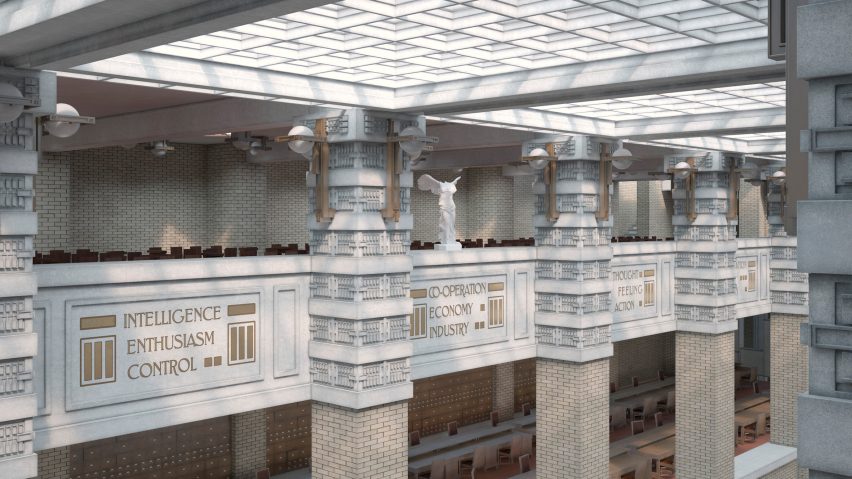
David Romero recreates Frank Lloyd Wright buildings in colour visualisations
Architect David Romero has created colour visualisations of a pair of now-demolished Frank Lloyd Wright buildings, previously only visible in black-and-white photographs.
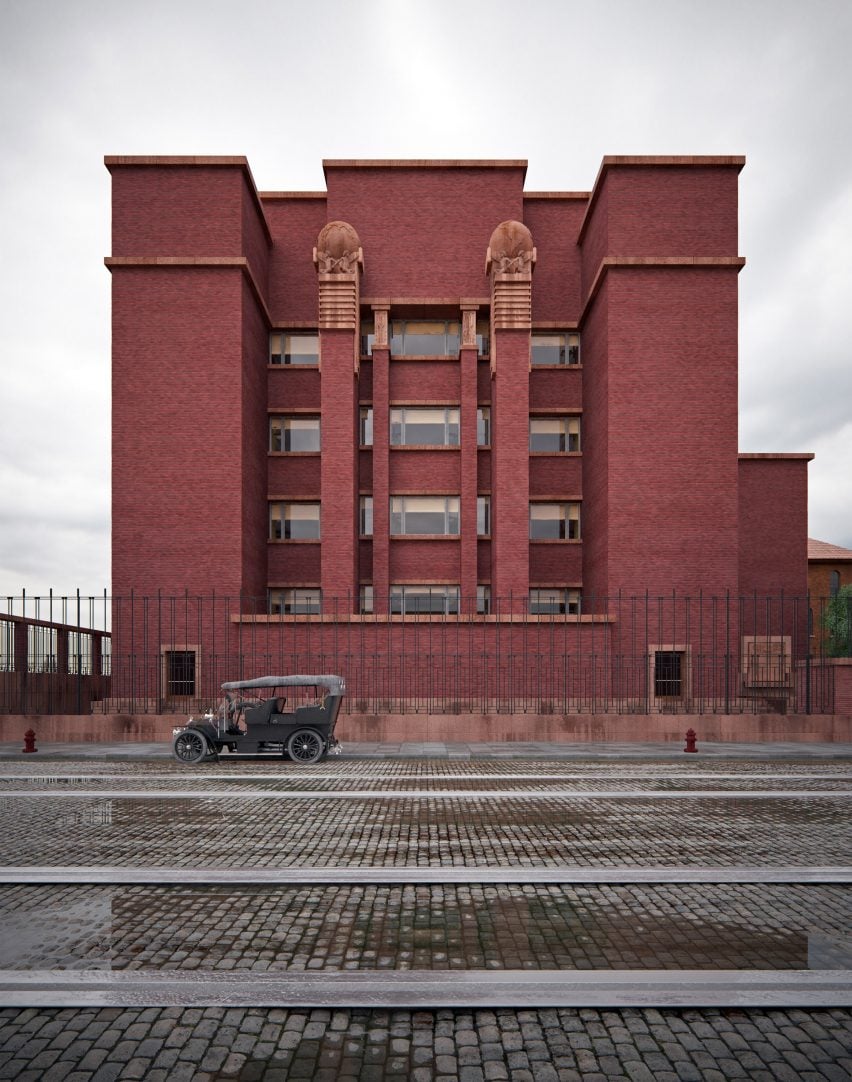
Romero's Hooked on the Past images visualise the interiors and exteriors of Frank Lloyd Wright's demolished Larkin Administration Building and ruined Rose Pauson House, as well as their detailing and furniture.
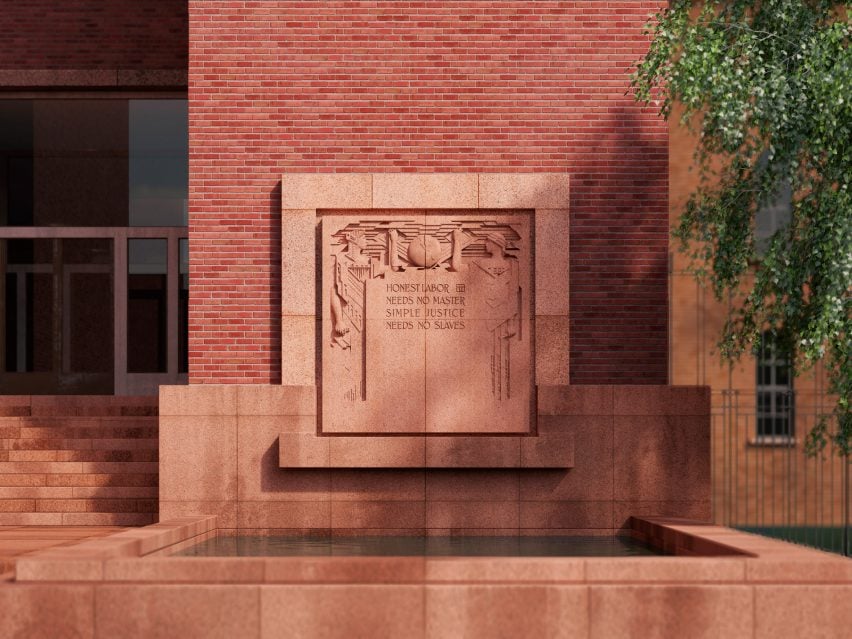
The Spanish architect chose to recreate the two buildings, as both are important to Wright's design legacy but are poorly recorded – especially in colour.
Wright is considered one of the 20th century's most important architects, and his work is credited a precursor to the modernism.
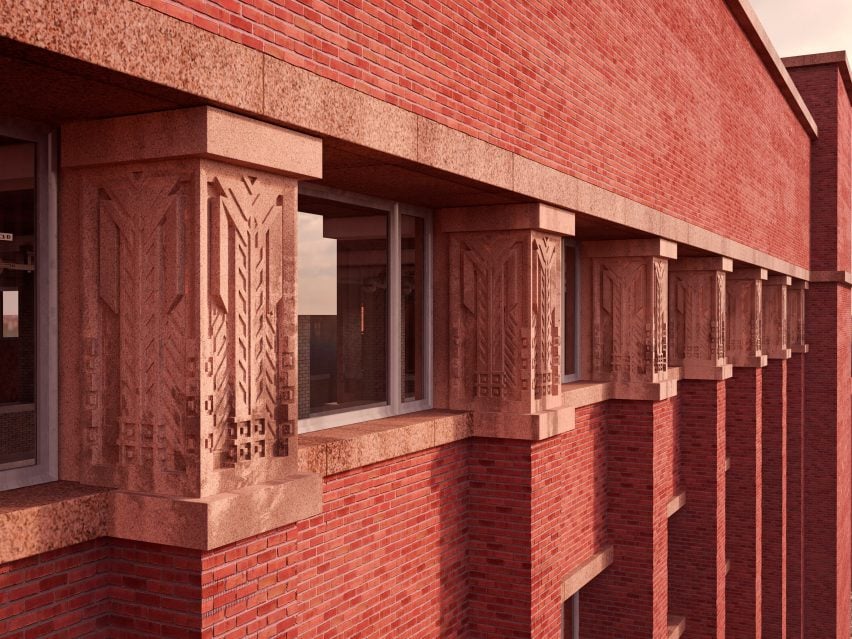
Romero wanted the images to be photorealisitic and so used modelling programmes AutoCAD and 3ds Max, before using Vray and Photoshop to add in various hues and textures.
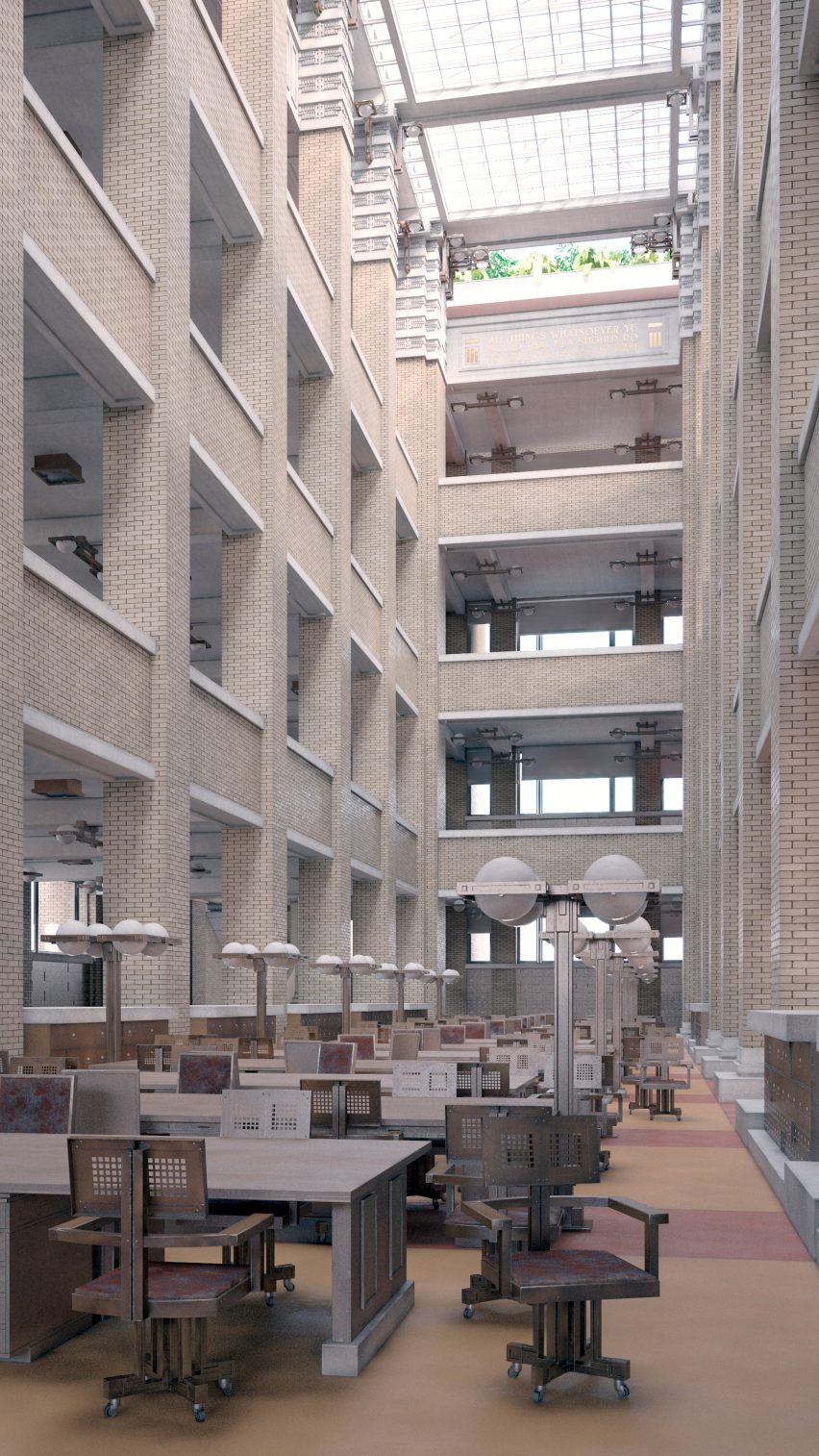
"My project Hooked On The Past is devoted to recreate important buildings of our past which have been lost or are currently deeply damaged, as well as relevant architectural projects which were never materialised," Romero told Dezeen.
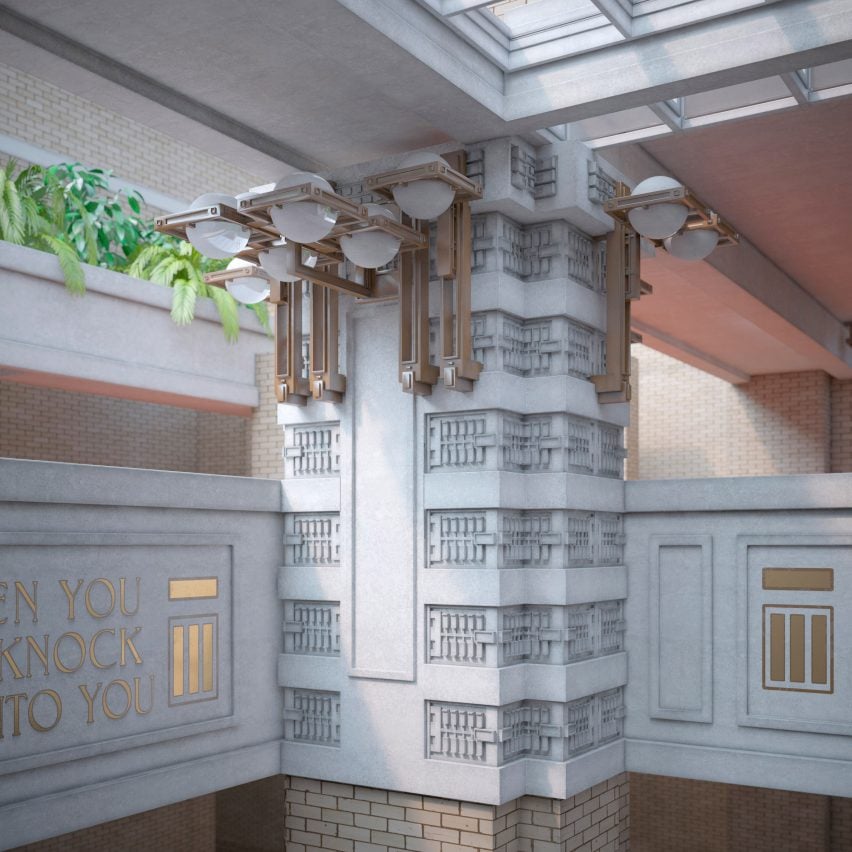
"Here is the result, which as far as I know is the first time anyone has recreated this building in photorealistic way and in colour, a step necessary in order to return to this masterpiece some of the life and magic that it had in its day," he continued.
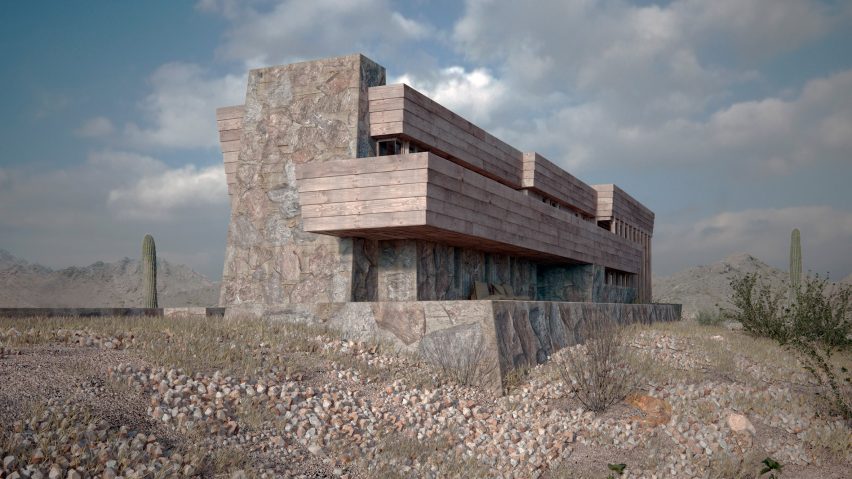
He captured the red brick and pink-tinted mortar of the five-storey office building for the Larkin Soap Company of Buffalo in New York – a detail he said was only revealed recently – and the stone and wood Rose Pauson House in Pheonix.
Wright completed the Larking Administration Building in 1904 but it was demolished in 1950 to make way for a truck stop that was never built.
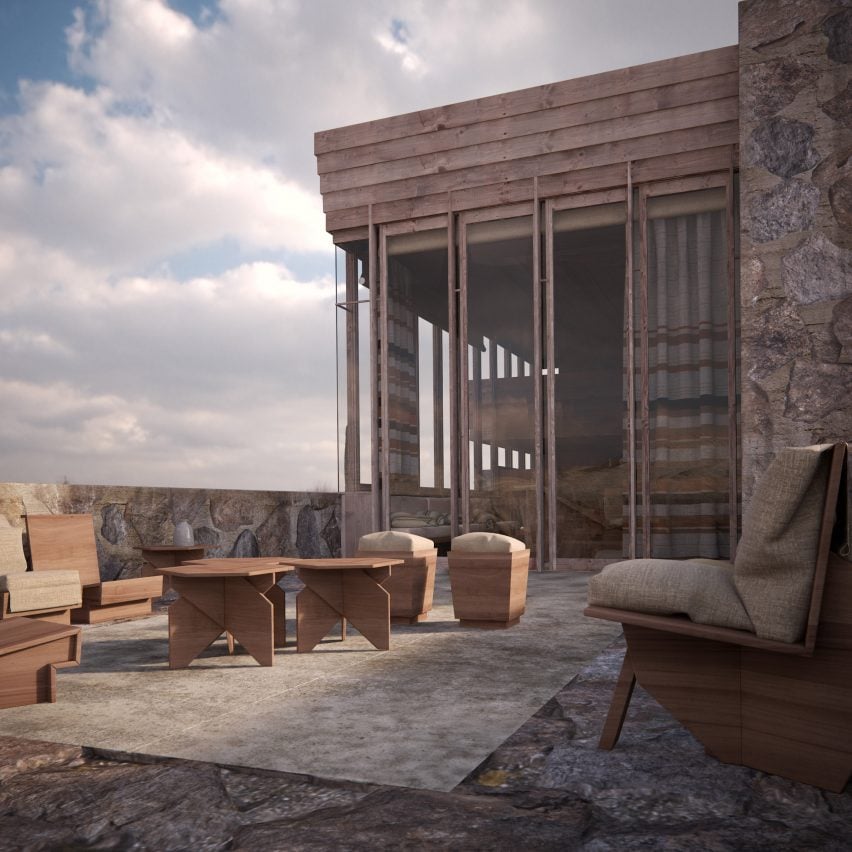
In designing the building, Wright created the first fully air-conditioned workplace, as well as offering an alternative working layout. Inside the building open-plan offices were arranged around a large central atrium topped by a skylight.
Romero has recreated all of the details that made the building unique, including stained glass windows, built-in desk furniture and suspended toilet bowls.
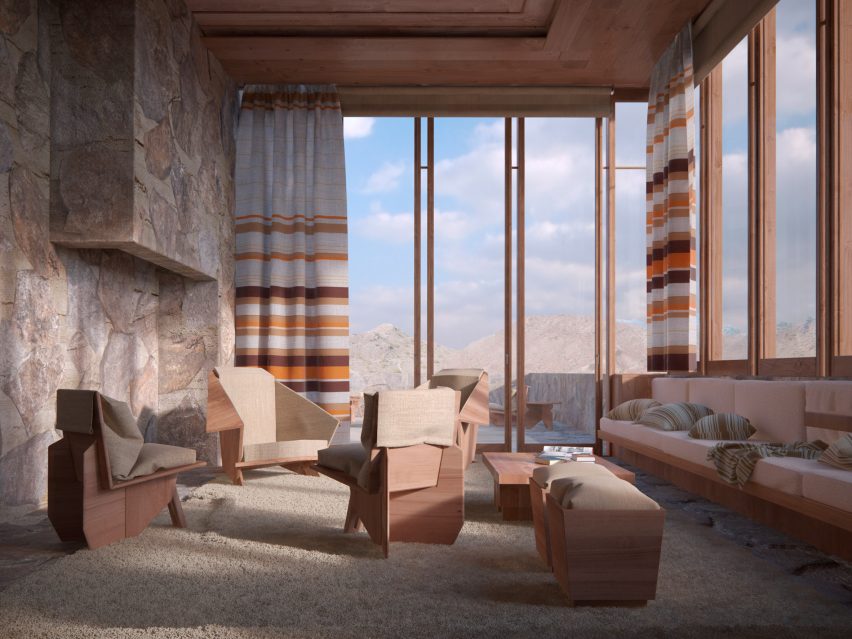
To add authenticity to the images, Romero also modelled and rendered a car from the era and parked it in front of the building.
Wright's other lost building is the Rose Pauson House, which features masonry walls that appear to emerge from a rock mixed with long horizontal boards of wood.
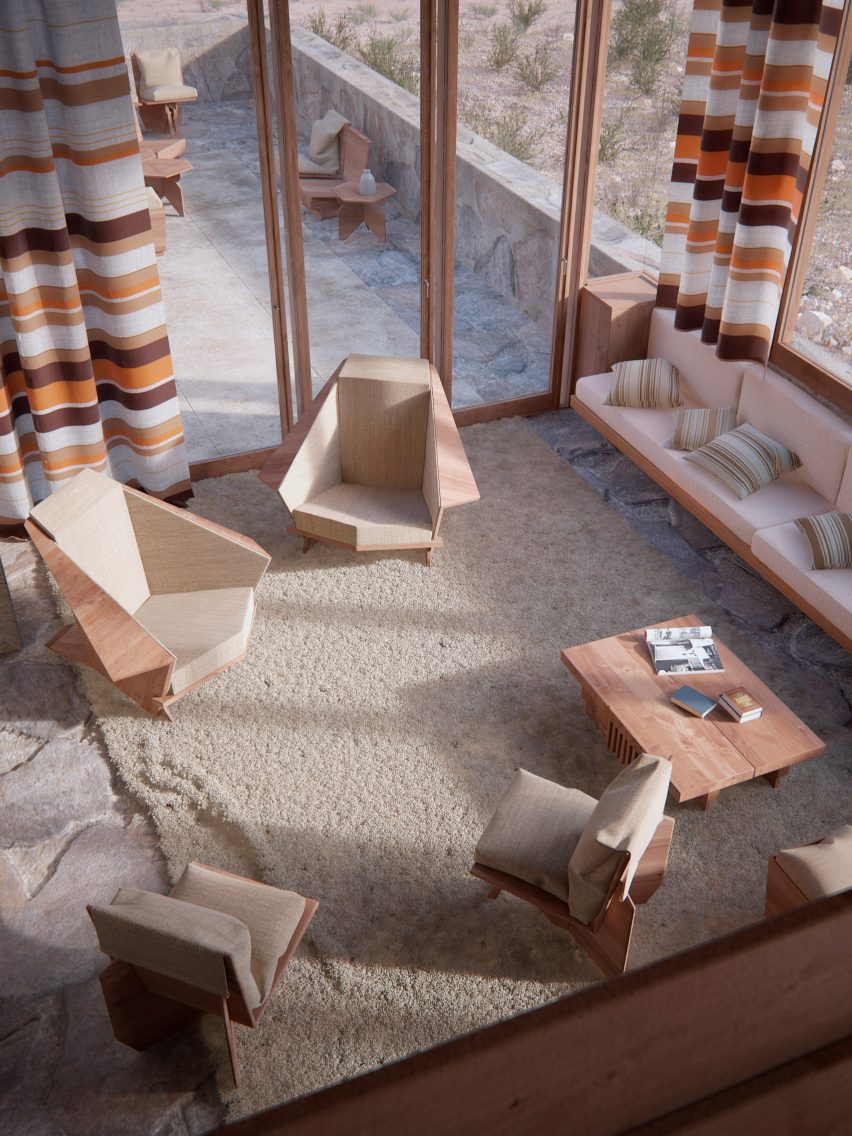
Designed for sisters Rose and Gertrude Pauson, the residence had large expanses of glazing one side panoramic view of its Arizona desert location.
It was finished in 1942, but burnt down a year later when an ember from the fireplace ignited a curtain. Perhaps as a reference to this, Romero used Marvelous Designer – a 3D rending tool for fabrics – to add striped curtains to run along the inside of the windows, as well as cushions and fabrics.
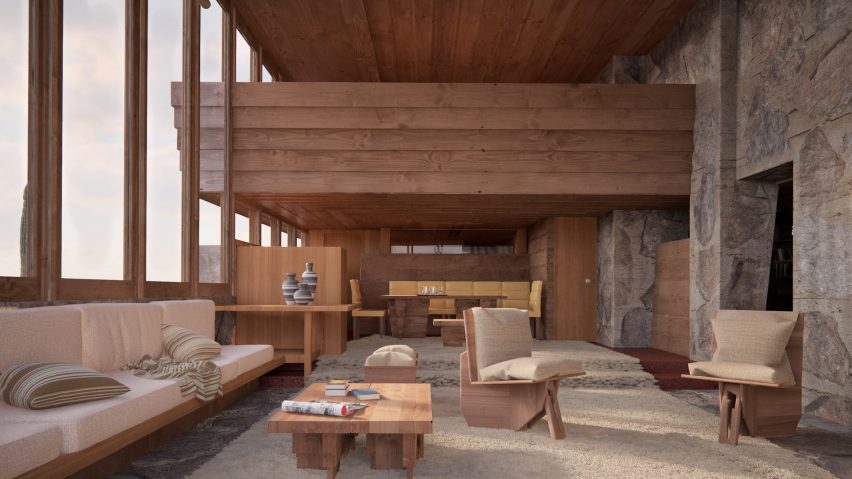
There were some colour photographs to work from of the Pauson residence, due to a photographic report from Pedro E Guerrero, but the images had faded over time.
"The Rose Pauson House was a little gem within the extensive work of Frank Lloyd Wright," said Romero. "Designed in the 40s it is considered a masterpiece, but after a tragic fire this building disappeared after only one year of existence."
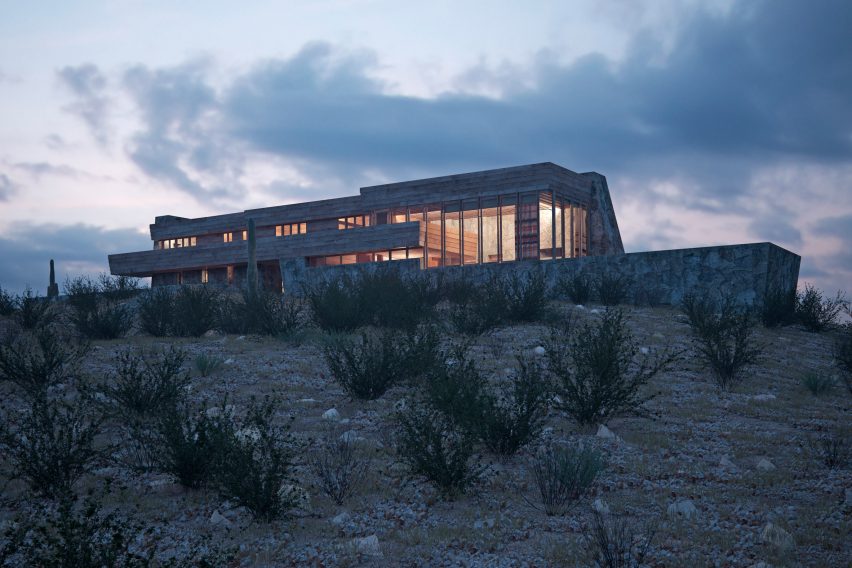
"As in my previous work with the Larkin, I thought it was worthwhile to visit such a fascinating building, so now you can enjoy the visit to this superb ship that once sailed through the Arizona desert," he added. "Of the many constructions of Wright who have been lost over time, this is one of the most yearned."
After the fire, just the walls and foundations remained and became a local landmark named Shiprock. These were later removed to make way for a street, but the chimney was moved south to functions as a permanent monument to the Alta Vista subdivision lands.
Among Frank Lloyd Wright's most famous projects is the 1927 Fallingwater house in Pennsylvania, the 1939 Johnson Wax headquarters in Wisconsin and the 1959 Guggenheim Museum in New York.
Last year, 10 of his buildings were nominated for UNESCO's World Heritage List.
New York's Museum of Modern Art will host a major retrospective of Wright's work in 2017 to coincide with what would have been his 150th birthday.